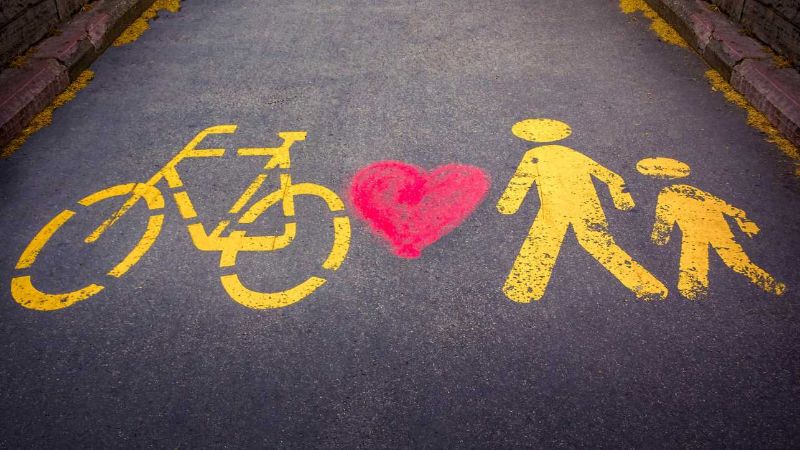Walking to net zero
If we want to achieve climate protection goals such as net zero, we need to eliminate 80 percent of today’s emissions. This also entails a radical rethinking of our urban development policy. What, exactly, should low-emission settlement areas look like?
In theory, that’s not difficult to answer – simply bring A closer to B, reduce distances. But our cities have become less densely populated: more and more jobs have been created and proportionally less and less housing, making it even more expensive. Reasonably affordable housing can now only be found outside the conurbations, which inevitably increases the distance between living and working. At the same time, in developing good road and rail networks, the state enables traffic to travel at high speed between A and B. This isn’t just a contradiction to the climate goals, it’s one the government is subsidising!
Ten minutes walking is the limit
If we’re to save the world from climate change, we need patterns of movement that help reduce emissions. One way to achieve them is to intensify land use in appropriate areas. But replacing a single-family home with no transport infrastructure within walking distance by a building with five apartments won’t do the job. It will simply mean ten cars on the road instead of “just” two.
We human beings like things comfortable – let’s not pretend otherwise. When it comes to getting around, many of us find walking more than ten minutes from A to B too much of a hassle. For distances outside a 500-metre radius, we could go by bike or take public transport, but regrettably, in most cases we opt for private motorised vehicles.
Not only denser also more mixed
As well as ensuring a higher degree of land usage, there must be a better mix of uses. Ideally, living, working, recreation and supply would be within a 10-minute walking distance. An added bonus: the higher the intensity of use, the more varied the local supply offer.
The 10-minute neighbourhood concept that I’ve developed assumes the following: within a radius of 500 metres, the ratio of residents to full employees is 2:1. For the required densification, at least 10,000 residents and 5,000 full employees would have to live and work within this radius. And, of course, the locations need to have good public transport links. It is not a must that people live and work in the same 10-minute neighborhood. However, the likelihood that this will become an option is increasing, and even more so with the possibilities of home offices and co-working.1
The shape of things to come
As part of the city of Baden’s Oberstadt4D project2, we’re now testing how this concept might be implemented in practice. In collaboration with a wide range of stakeholders and using state-of-the-art visualisation and communication technology, we’re showing in a four-dimensional space-time model what neighbourhood transformation could look like.
Our starting point is a 46-hectare settlement area in which today 3,700 people live and work. As 40 percent of the 80-hectare perimeter is covered by forest, 9,000 people (i.e. 60 percent of 15,000) would have to live and work in this neighbourhood in future, assuming the same amount of living space per inhabitant. Yes, I’m aware this is ambitious and would mean changing some regulations – but the more people living and working within a 10-minute walking distance, the better for the climate.3
Showing what goes
Achieving the net-zero climate protection target means shouldering responsibility and calls for policymakers, scientists and practitioners to join forces as fast as possible. The part science plays here is to model, calculate and show what a low-emission habitat can look like and what it delivers. It’s up to us to lay a framework where all actors can discuss the transformation process together and have a say in its design. If we have most of what we need for a good life within walking distance, the way we behave and get around will automatically change – and this will reduce CO2 emissions. So let’s get moving!
